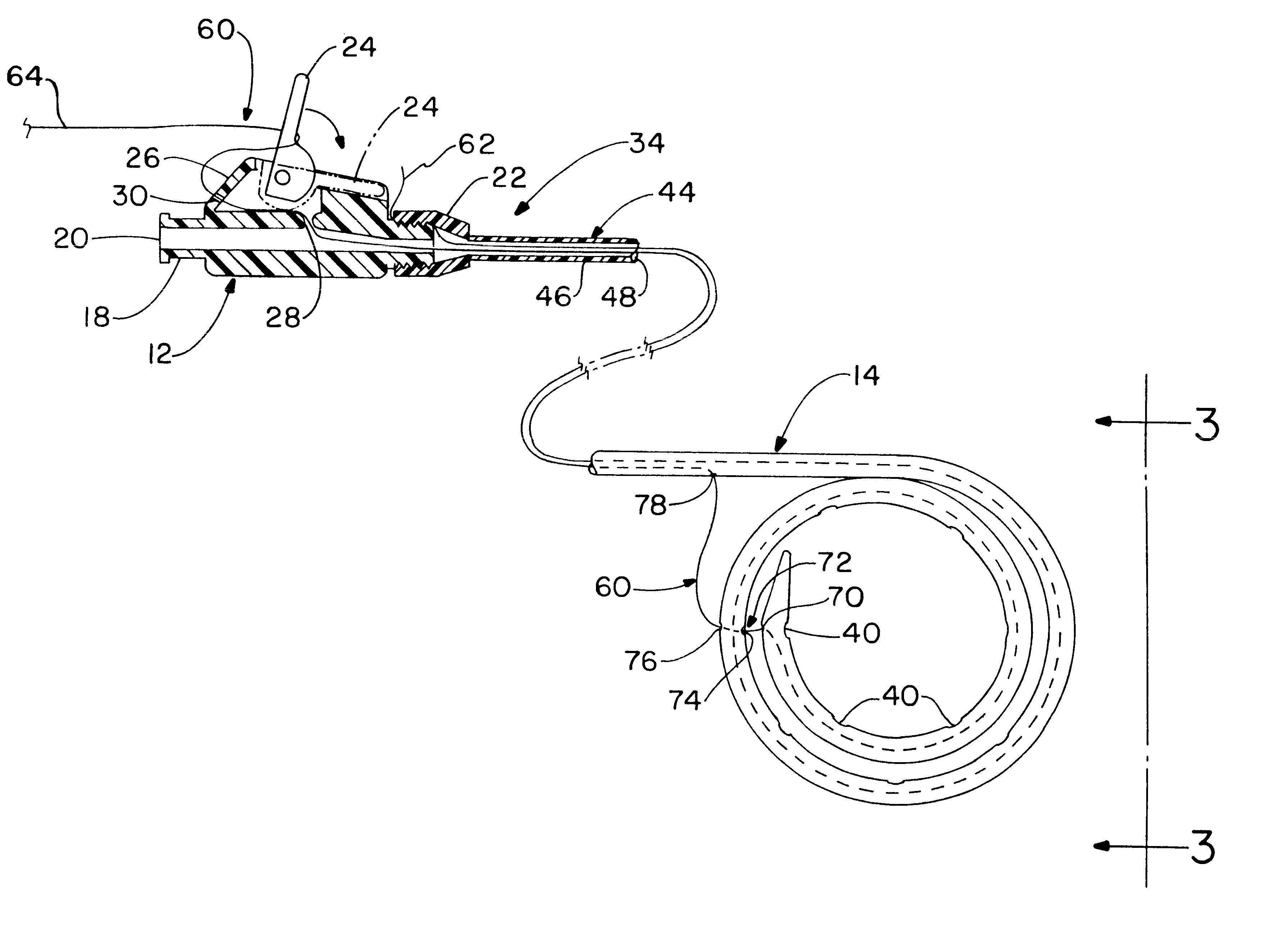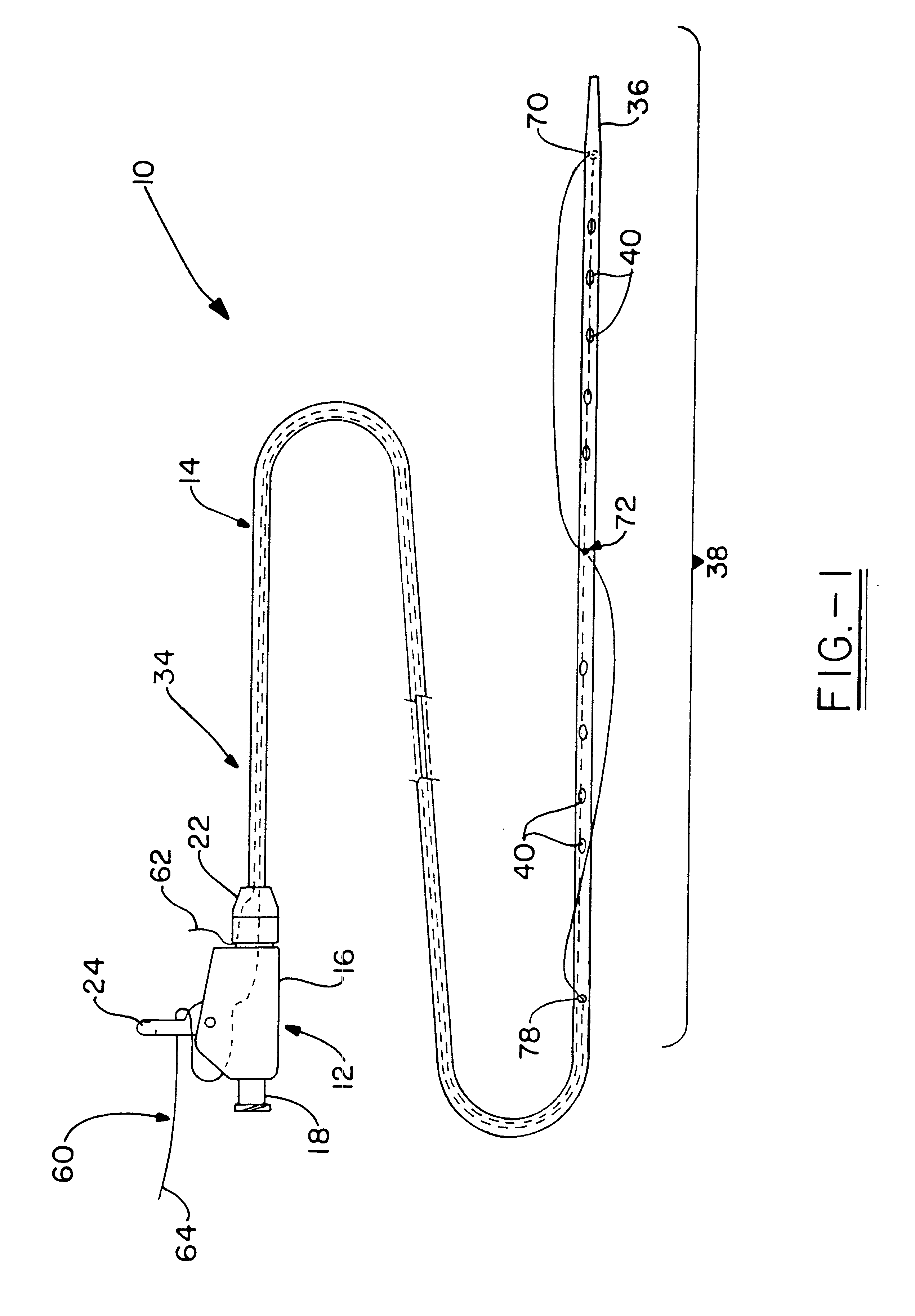Double-loop catheter
a multipleloop catheter and catheter technology, applied in the direction of guide wires, medical devices, other medical devices, etc., can solve the problems of catheter not functioning properly, catheter still subject to dislodging by patient movement, and inability to dislodge the catheter in an unacceptable situation
- Summary
- Abstract
- Description
- Claims
- Application Information
AI Technical Summary
Benefits of technology
Problems solved by technology
Method used
Image
Examples
Embodiment Construction
A multi-loop catheter for use with draining excess or infected fluid from a body cavity or for infusing medication into the body cavity, made in accordance with the concepts of the present invention, is indicated generally by the numeral 10 in the accompanying drawings, and is best seen generally in FIGS. 1 and 2. The primary components of the catheter 10 include a hub, generally indicated by the numeral 12, and an elongated hollow tubular member, generally indicated by the numeral 14. The hub 12 is typically made of a plastic semi-rigid material, while the tubular member is made of a flexible polymeric material, such as Ultrathane.TM.. Those skilled in the art will appreciate that the materials selected for the hub and the tubular member comply with the necessary regulations for medical devices.
The hub 12 includes a body 16 that has a coupling end 18, through which extends a channel 20. The coupling end 18 is usually connected or installed to another device upon insertion of the ca...
PUM
 Login to View More
Login to View More Abstract
Description
Claims
Application Information
 Login to View More
Login to View More - R&D
- Intellectual Property
- Life Sciences
- Materials
- Tech Scout
- Unparalleled Data Quality
- Higher Quality Content
- 60% Fewer Hallucinations
Browse by: Latest US Patents, China's latest patents, Technical Efficacy Thesaurus, Application Domain, Technology Topic, Popular Technical Reports.
© 2025 PatSnap. All rights reserved.Legal|Privacy policy|Modern Slavery Act Transparency Statement|Sitemap|About US| Contact US: help@patsnap.com



